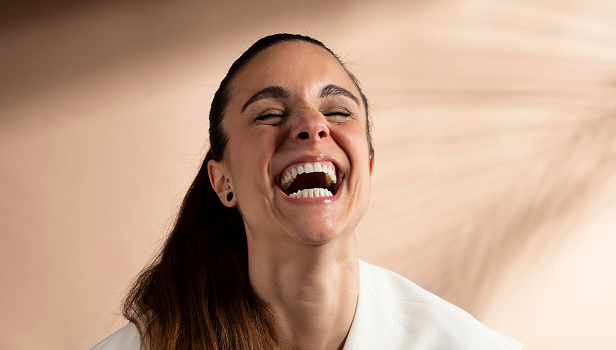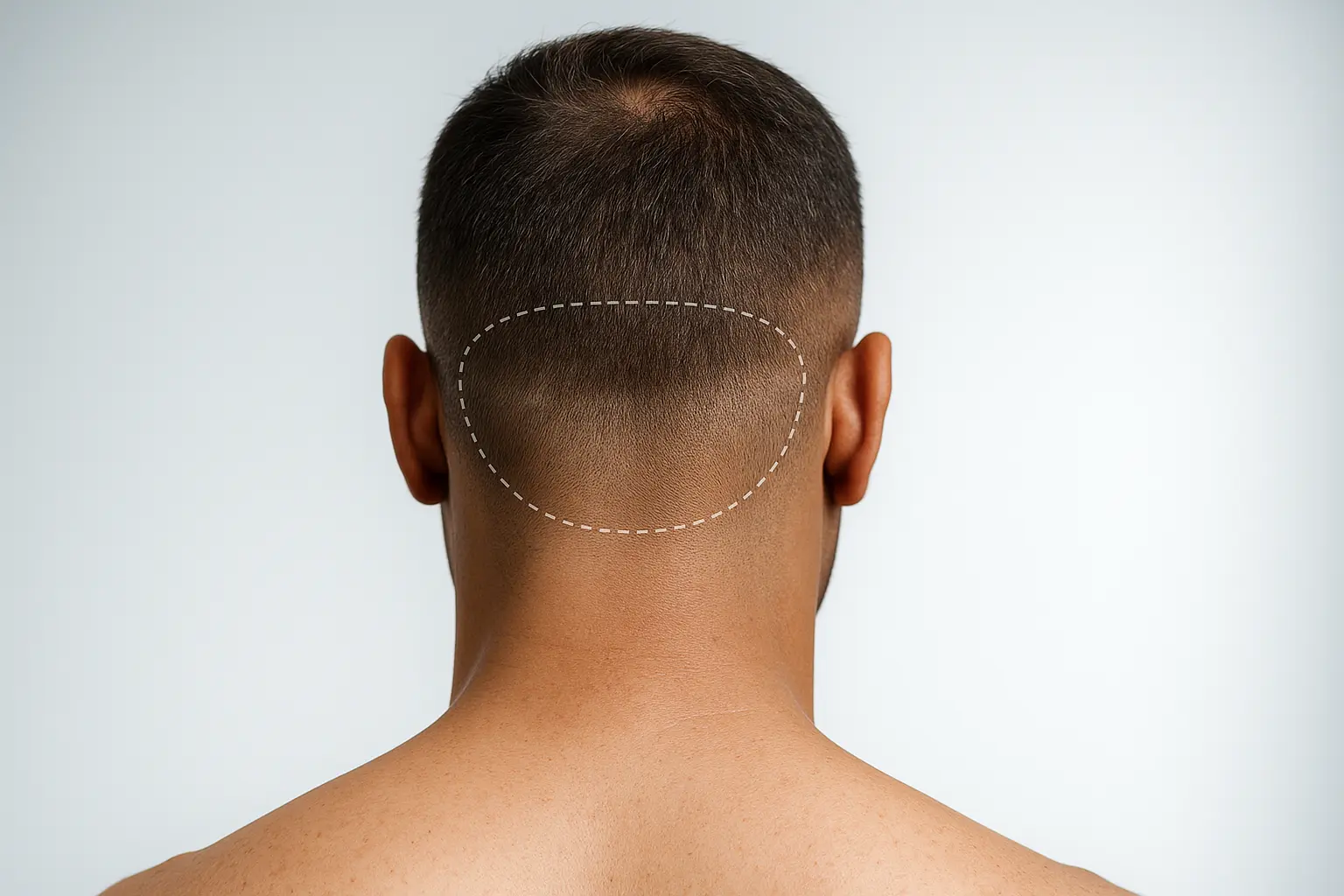When you have a hair transplant, the donor area is where your surgeon extracts healthy hair follicles to relocate them to thinning or balding zones. Those follicles typically keep the characteristics of where they came from after they’re moved.
Because donor hair is finite, managing it prudently is the key to a natural result that also ages well. That’s why a great transplant isn’t only about what you add to the front, it’s equally about what you preserve in the back.
Why donor management matters
- It’s your lifetime supply. Everyone has a limited number of follicles that are durable enough to be moved. Good planning respects that limit and saves grafts for later life if you need more coverage.
- It’s where permanence comes from. Donor hairs (most often in a zone across the occiput and parietal scalp) are relatively resistant to androgen‑driven thinning compared with the hairline and crown, hence their use in transplantation. Researcher often calls this protected region the safe donor area (SDA), while also noting it has limits and exceptions (e.g., some patterns can encroach).
- It’s visible if mishandled. Over‑extraction or poor spacing can leave a “moth‑eaten” look or light patches. Contemporary research repeatedly warns against overharvesting and stresses uniform, conservative harvest patterns.
How we map your donor area (the assessment)
Before talking graft numbers, we evaluate four essentials:
- Density (follicular units per cm²) and hair caliber (shaft thickness), which together determine your transplantable hair mass”
- Miniaturization in the donor zone. Diffuse unpatterned alopecia (DUPA) miniaturizes hair everywhere, including the back and sides; such patients are generally not candidates for transplant until the diagnosis is clarified and medical therapy considered.
- Pattern clues like early retrograde thinning (hairline creeping upward at the nape/around the ears) that would shrink the truly safe harvest area if it progresses.
- Trichoscopic/phototrichogram measurements for objective baselines. TrichoScan is a validated automated method that correlates well with manual counts and reduces operator variability.
Techniques we use (and why)
FUE (Follicular Unit Excision) removes hair follicles one by one with sub‑millimeter punches, often around 0.8–1.0 mm, leaving small dot‑like scars that are typically hard to notice when hair is kept a bit longer.
What matters most for hair transplant donor areas:
- Distribution over density. We harvest uniformly over a wider zone, not in clusters, to avoid visible thinning “stripes” or patchiness.
- Extraction density ceiling. We stay below safe extraction limits so the donor still looks and behaves naturally years later (a point emphasized in professional guidance on safe excision).
- Punch selection & angulation. Choosing the right punch size and aligning it with the follicle path helps minimize transection and scarring and is tailored to your hair characteristics.
What about DHI?
DHI (Direct Hair Implantation) describes how grafts are placed, not how they’re harvested. After FUE extraction, we use sharp implanter pens (Choi‑type) to create the site and insert the graft in one motion.
Potential benefits include precise angle/depth control, efficiency, and less manipulation of each graft; the method can support dense packing when performed by trained teams. Evidence shows it’s a valid technique, but like all methods, results depend on surgical skill and teamwork rather than the tool alone.
Who has (and hasn’t) a good donor area?
Most candidates with pattern hair loss and a stable medical plan are good fits for FUE + DHI. Common not‑now or not‑ideal scenarios include:
- Diffuse unpatterned alopecia (DUPA): because the donor itself is thinning, transplanted hairs may not be permanent, transplant is usually deferred while diagnosis and medical therapy are addressed.
- Active scarring alopecias (e.g., LPP, CCCA) and unstable hair loss, surgery can worsen disease or fail.
- Unrealistic graft promises (e.g., mega‑sessions that exceed your safe donor limits). Good ethics and planning beat big numbers.
A solid candidacy discussion always pairs medical therapy (to slow progression) with surgical planning (to use the donor wisely).
Planning your “lifetime graft budget”
Think of transplant planning as supply vs. demand across decades:
- Supply = how many durable donor follicles you have, after accounting for how the safe zone may shrink with future loss.
- Demand = how large the hairline, mid‑scalp, and crown might become over time.
Ethical donor area planning spreads harvests, respects extraction ceilings, and paces procedures to your goals and biology.
Healing timeline of the donor area: what most patients experience
| Timeframe | What to expect |
|---|
| Days 0 to 3 | Mild soreness or tightness in the donor area; tiny dots with thin crusts. |
| Days 4 to 10 | Crusts flake off; redness begins to fade. |
| Weeks 3 to 8 | Some shedding of transplanted hairs is normal; donor looks normal at conversation distance. |
| Months 3 to 6 | Early growth appears; hair texture starts to mature. |
| Months 9 to 12+ | Full cosmetic impact. |
Our app‑based hair transplant aftercare gives you day‑by‑day washing, sleeping, and activity reminders, and our team checks in proactively, long after surgery – so small issues never become big ones.
Risks in the donor area (and how we minimize them)
- Overharvesting / visible thinning: Prevented by even spacing and staying under safe extraction densities.
- Patchy scarring or color change: Reduced by appropriate punch diameter, correct angles, and hydration of tissue.
- Temporary numbness or irritation: Usually settles as nerves recover.
- Ingrown hairs or folliculitis: Managed with proper hygiene and early treatment if they arise.
- Transient donor shedding (TE): As above, uncommon and typically resolves.
FAQs (fast answers)
FUE leaves tiny circular dots. With sub‑millimeter punches and even spacing, most patients keep short hairstyles without obvious signs, though no surgery is scar‑free.
There’s no universal number; it depends on your density, hair shaft caliber, future pattern risk, and extraction pattern. Responsible planning follows safe excision principles rather than chasing big headline counts.
Selective or “window” shaving is possible in some cases, but full donor trimming often yields safer, faster, more uniform harvesting. (We’ll advise based on your hairstyle and goals.
Sometimes, yes. In carefully selected cases, beard hair (and occasionally torso hair) can supplement scalp grafts. Beard hair is often thicker and robust; it’s great for adding bulk in mid‑scalp or crown when mixed with scalp hair, but is not ideal alone for the hairline due to texture. Torso hair is more variable in length and growth cycle; it’s used selectively based on a structured “torso donor index.”
Ready to explore your options?
A short conversation can make things clear. Share a few photos and your hair loss history. We will map your donor area, outline a conservative graft plan, and answer your questions in plain language.
What you can expect:
- Personal advice based on your goals and hair biology
- Donor mapping and an estimated graft range
- Guidance on recovery and aftercare
- Confidential, no pressure
Book a free consultation with one of our specialists, they’re online 7 days a week.




